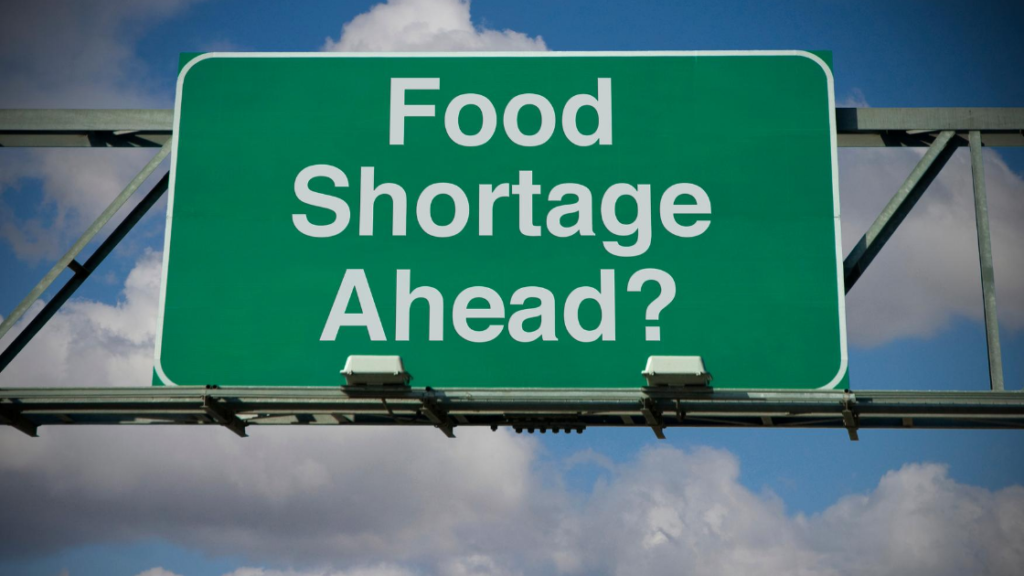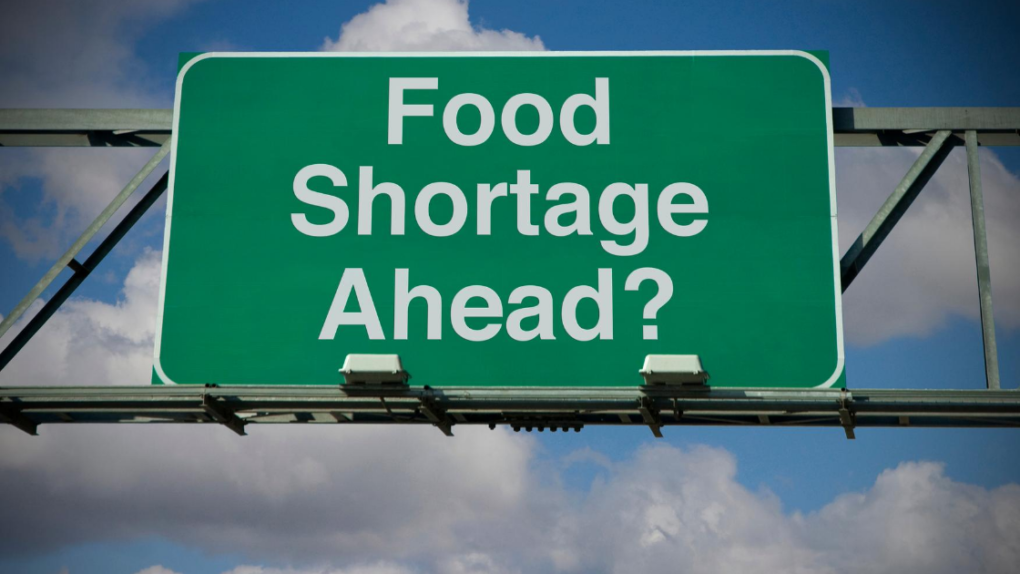What Feels Like a Food Shortage Is Fairly Normal In Other Countries — Here’s How To Adjust Your Perspective
 By Daisy Luther
By Daisy Luther
Ever since March, we’ve seen dramatic photos of bare shelves across the country. Initially, we were told it was just an issue with everyone panic-buying due to the lockdown and that those pesky preppers and hoarders were the cause of the whole mess.
But now, here we are, six months later, and the shelves in many places are still empty. There are things that are becoming increasingly difficult to find. Electronics, bedding, certain kinds of clothing and shoes, and many types of food are still sparse, if available at all. A trip to Walmart or Target will give you a visual demonstration of what we used to get from China.
Some folks are beginning to become worried that this is permanent. And they just might be right. But here’s another perspective to consider for the bare shelves we’re seeing.
Widget not in any sidebars
Choices
One thing that skews our perspective a little bit is that we have been “the land of plenty” for so long. We’ve been spoiled for choice and surrounded by abundance, most of us for our entire lives. A trip to Walmart or a grocery store meant you could spend hours picking and choosing between 29 different brands of ranch salad dressing, dozens of sets of sheets for your bed, or 15 different cuts of beef, all in one stop.
But now, when you go into the store to grab new sheets for your bed, you may find you have an expanse of bare shelving and one or two lonely sheet sets from which to choose. The same holds true for many different products.
The thing we’re missing is choices. There are very few choices at our stores right now.
Many countries focus on specialty shops.
Over the past couple of years, I’ve spent many months living abroad, both in Europe and in Mexico. Most of my time away has been spent in Greece, some small countries in the Balkans, and Mexico. There are two major differences between shopping there and shopping in the pre-COVID United States.
First, in other countries, you see more specialty stores instead of behemoths like Walmart or Kroger.
Get Non-GMO storable food HERE!
When I lived in Greece for a few months, I had some regular rounds I made once I got the hang of shopping there. I bought my meat from the butcher shop, my fruits and veggies from a produce stand, my bread from the bakery, cheese from a cheese shop, and a dessert from the pastry shop. It was a pleasant outing to walk around and pick these things up. The shopkeepers loved to tell you that the mandarins in your hand came straight from the farm of an uncle in the eastern part of the country, or that they have their own farm specifically to provide the juicy heirloom tomatoes that you were looking for, or that a relative raised all the beef available in their shop and how that relative made things more special. The thing that stood out to me was how the owners and workers took great pride in their offerings. This is definitely not something you’ll see at your local Safeway.
As I spend time in more countries, I’ve seen that these kinds of specialty shops are very common outside the United States. This isn’t to say they don’t exist in the US – it’s just that most people like to buy food conveniently grouped into one big store. Of course, there were also grocery stores that sold a little bit of everything. This is where I’d go to pick up things like flour, toilet paper, dishwashing soap, and other basics. However, at these stores, the fresh products weren’t nearly as good as the ones from the specialty shops.
There are fewer choices outside the US.
The other thing I noticed was a reduced number of choices when I went to a bigger grocery store outside the United States.
Let’s take meat, for example. Here in the United States, our stores have a lengthy expanse with hundreds of packages of meat down one aisle of the store. Outside the United States (at least where I spent most of my time) you had a little corner with a couple of chilled cases of meat. In those cases you could find chicken in perhaps three forms – whole, cut up with bone-in, and chicken breasts. For beef, you might find a roast and ground meat. With pork, you might be able to get a tenderloin, a larger bone-in roast, and some pork chops.
Moving along to other sections of the store, produce is not a vast corner with 25% of the contents of the store. It was a small section and the options were fairly basic. You didn’t have 17 brands or types of potatoes from which to choose. You just had potatoes in general in a large bin where you reached in and bagged your own.
There was food, and plenty of it. It was just that you didn’t have 29 different brands of salad dressing. You didn’t have as much processed food. You had access to basics.
This isn’t the end of the world.
Our stores look positively barren here in the US right now. We see headlines blaring about “shortages.” Many stores are still limiting purchases of meat, toilet paper, and cleaning wipes to two per customer. All of these things add up to provoke and atmosphere or dread. People are panicking because it feels like there’s “nothing” at the store.
I get it because it really is unsettling to see those long, empty shelves. This is not what we’re used to seeing here in the land of plenty. Part of the issue is that our stores were designed to display vast abundance, and now that there are fewer choices, these stores look alarmingly empty.
But perhaps it isn’t quite as bad as it seems. Perhaps it is our perspective that needs to change. Perhaps we’ll just be doing things differently.
Get an Emergency Fire Blanket Here!
I see a lot of similarities to the way I was shopping outside the country. While it looks like our football-field-length meat counters are empty and that we’re running out of meat, note that there still is meat available. It just might not be in the form that you are accustomed. Maybe you are going to have to cut your own inexpensive roast into the form you wanted. Perhaps you should plan more recipes with the leftovers from your whole chicken.
If you need new sheets (maybe you have added a bed in a size you didn’t have before) you may have to modify sheets that are too big, or perhaps use a flat sheet carefully tucked on the bottom instead of the perfectly-sized fitted sheet. Maybe you can’t find a toaster but you can find a toaster oven – or even use the oven in your kitchen.
I’m by no means saying that our economy is just fine or that our supply chain is A-OK. There are some things that you can’t get a hold of for love or money, like yeast, for example. But at this point, as long as you have the money to make purchases, there are products there to purchase. You just have fewer options for each item you wish to purchase.
Think differently about shopping.
It’s hard to make the switch from being able to choose one item from 15 types of that item to only having one type of that item. This is true whether you’re talking about yarn, about bacon, or about grapes. But remember, you can still get these things. You’re just going to have to change how you shop.
Like with other things that relate to frugality, a lot of this is about mindset. It’s important to have a mindset of abundance and gratitude.
Your favorite brand of detergent isn’t there? Well, there are two kinds to choose from and the ingredients to make your own. Therefore, laundry soap is available.
You wanted to make beef stew but there’s no stew meat available? Grab an inexpensive cut of roast beef and either ask the butcher counter to cut it up for you or cut it up into stew meat yourself once you get home. Learn to debone a chicken and be sure to put those bones in the freezer to make some stock later on.
Really focus on those smaller businesses like the ones I mentioned outside the US – look for local butchers, farmers, produce stands, etc., for much of your shopping. The products you get will probably be fresher, healthier, and best of all, reliably supplied within season.
Shift your perspective
You can see what I mean – it’s all about perspective. You don’t see people in Europe panicking because they can only get beef in two forms at the grocery store or because there’s only one brand of canned beans. They just buy their beef and their beans and carry on.
There are a lot of things that are out of our control. We cannot personally influence trade agreements, the behavior of people on social media, or the scary headlines we see in the mainstream media. But we can control how we live our lives. People all over the world look at grocery store inventory like ours and find it perfectly normal. They feel there’s plenty for everyone and feel no panic.
We can tap into that.
All we need to do is change the way we’re looking at things.
- Shift your perspective from one of deprivation to one of continued abundance. (There is plenty of meat – I just need to cook it differently)
- Don’t look at those mostly empty cases and panic. (These stores were designed for enormous amounts of inventory.)
- Tap into your problem-solving skills. (A king-sized flat sheet tucks around the mattress of a queen-sized bed just fine.)
- Buy locally. Find other sources for the things you want or need, like local farmers or co-ops. (This boosts your local economy and gives you some important connections.)
- Produce what you can. (Even some herbs and greens in the windowsill will make a difference.)
- Learn to make do. If you can’t find what you believe you need, how can you adapt to that? Is it something you can do without? Is it something you can solve creatively?
And then, calmly proceed with your life.
Yes, we’re only at the beginning of our economic issues here in the US, but by adapting to these changes little by little, and seeing them as a challenge to our frugal skills, we’ll be just fine. We will be ahead of the curve and ready to meet the next challenge when it arrives.
Source: The Frugalite
Daisy Luther is an author and blogger. She’s the single mom of two daughters and credits extreme frugality and a good sense of humor for her debt-free lifestyle. She is the author of numerous books, the editor of TheOrganicPrepper.com, and is the founder of a small digital publishing company in the emergency preparedness niche.
FREE PDF: 10 Best Books To Survive Food Shortages & Famines



